Drying your clothing indoors could be harming your health, experts warn – here's what you need to do to 'keep your family breathing easier'
There are ways around it
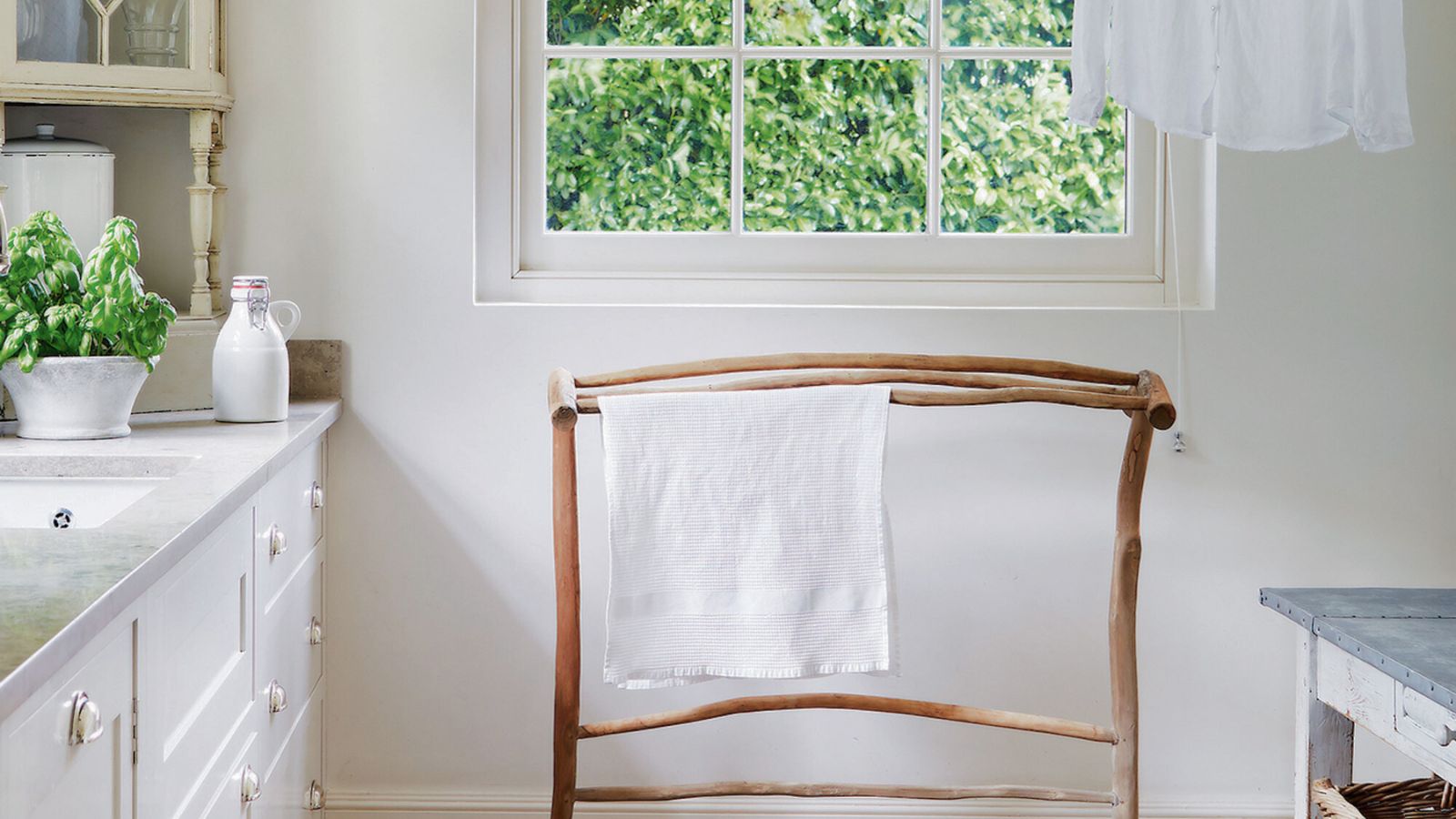

It might seem like a savvy way to save on energy bills, but did you know that drying your clothes indoors could potentially put your health at risk?
From increased humidity to the growth of mold and mildew, the consequences of indoor drying are often underestimated.
Here, air quality pros explain the potential risks behind drying clothes indoors so you can make healthy decisions around your laundry routine.
The risk of drying clothes indoors
By far the biggest risk of drying clothes indoors in winter is increased moisture from damp clothing. Combined with poor ventilation from shut-up windows your innocent laundry can significantly increase the risk of mold in your home.
Seth Mapp, general manager of Champion and Nash in Houston, Texas, warns, 'Many homeowners don't realize that their laundry room could be a breeding ground for mold and mildew.
'The EPA warns that high humidity and inadequate ventilation create the perfect storm for mold growth, especially in spaces like laundry rooms where moisture lingers.'
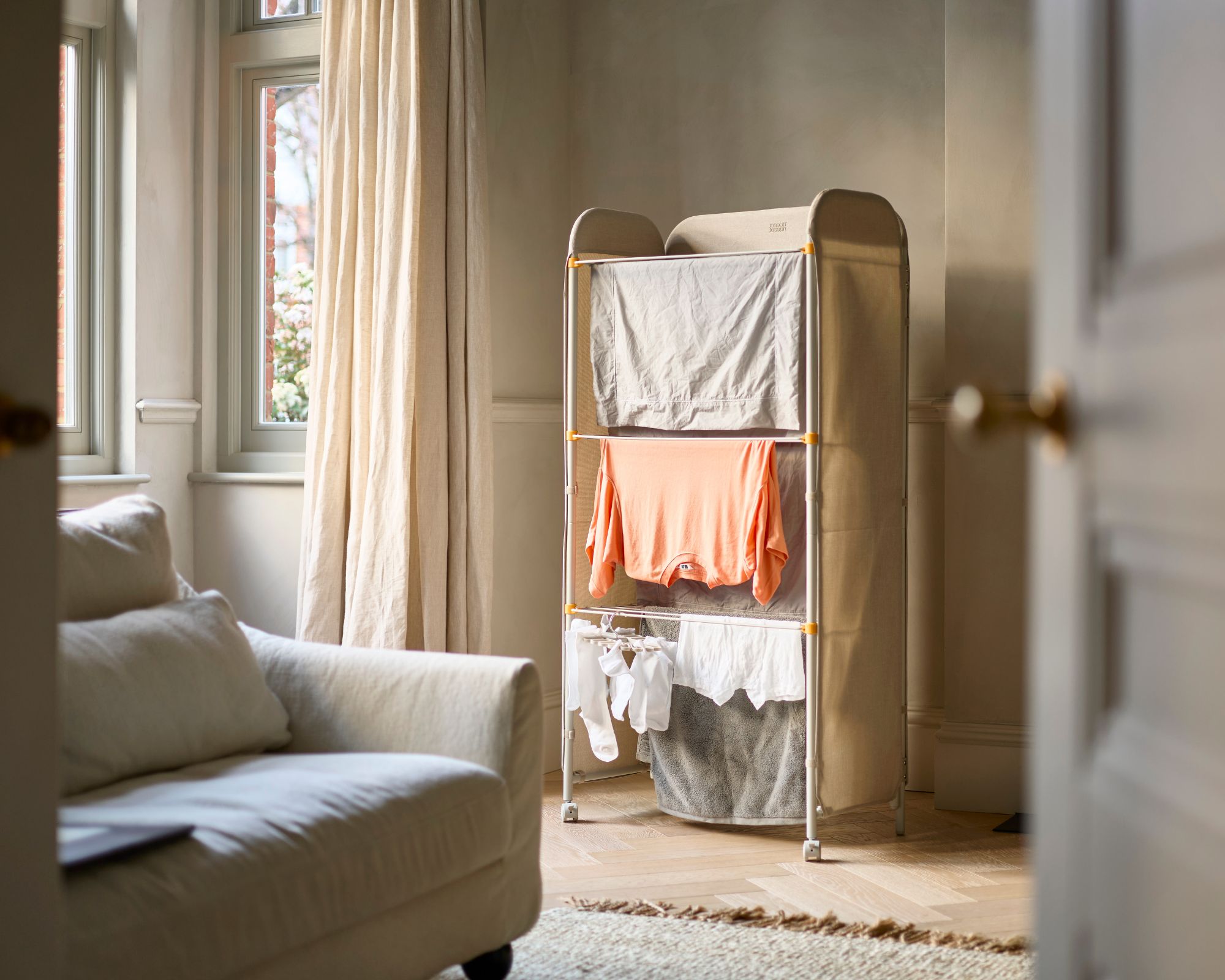
Heated airers can help speed up the drying process to reduce the risk of mold and mildew.
Seth continues, 'According to air quality experts, including the EPA, indoor humidity levels should be kept between 45 and 60% to help prevent rampant biological growths.'
Design expertise in your inbox – from inspiring decorating ideas and beautiful celebrity homes to practical gardening advice and shopping round-ups.
Luckily, the signs of high home humidity are easy enough to spot – stuffy air and condensation inside windows and on walls are the most obvious, but you may also find yourself questioning why your house smells musty.
To get around this, Seth advises proper ventilation, 'to keep your laundry space fresh and your family breathing easier.'
The easiest way to keep an eye on humidity levels is to use a hygrometer to measure moisture levels across your home. This will alert you to dangerous levels before mold can take hold. We recommend the number one rated ThermoPro TP50 Digital Hygrometer available at Amazon for this, which is highly accurate, with a quick refresh rate.
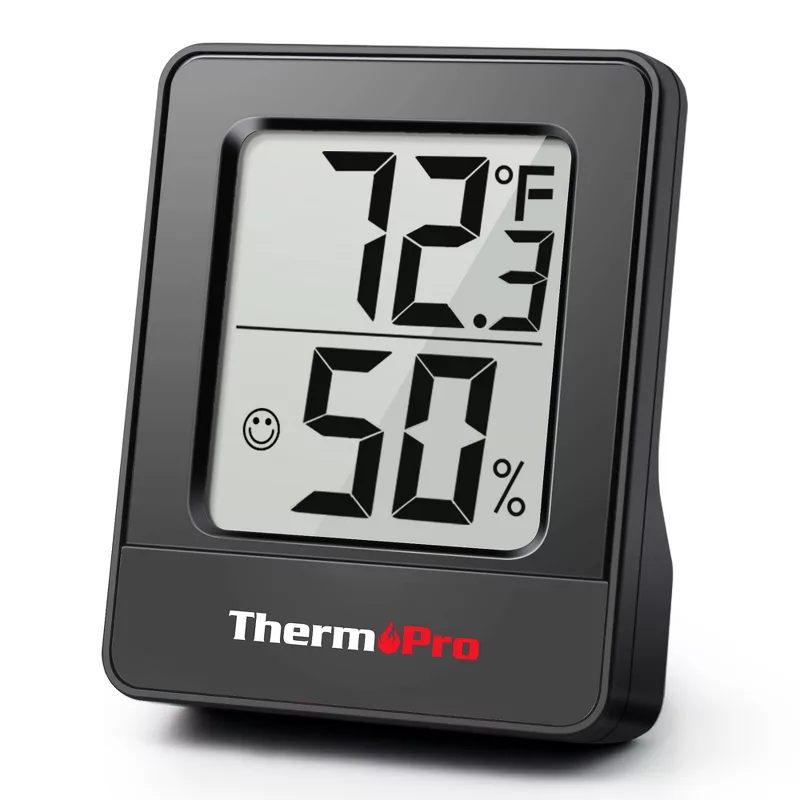
This Thermopro hydrometer is calibrated to an accuracy of ±1 Fahrenheit and ±2%-3% humidity. It also features face icons to indicate air condition to notify you to adjust your humidifier or dehumidifier accordingly.
How to dry clothes indoors safely
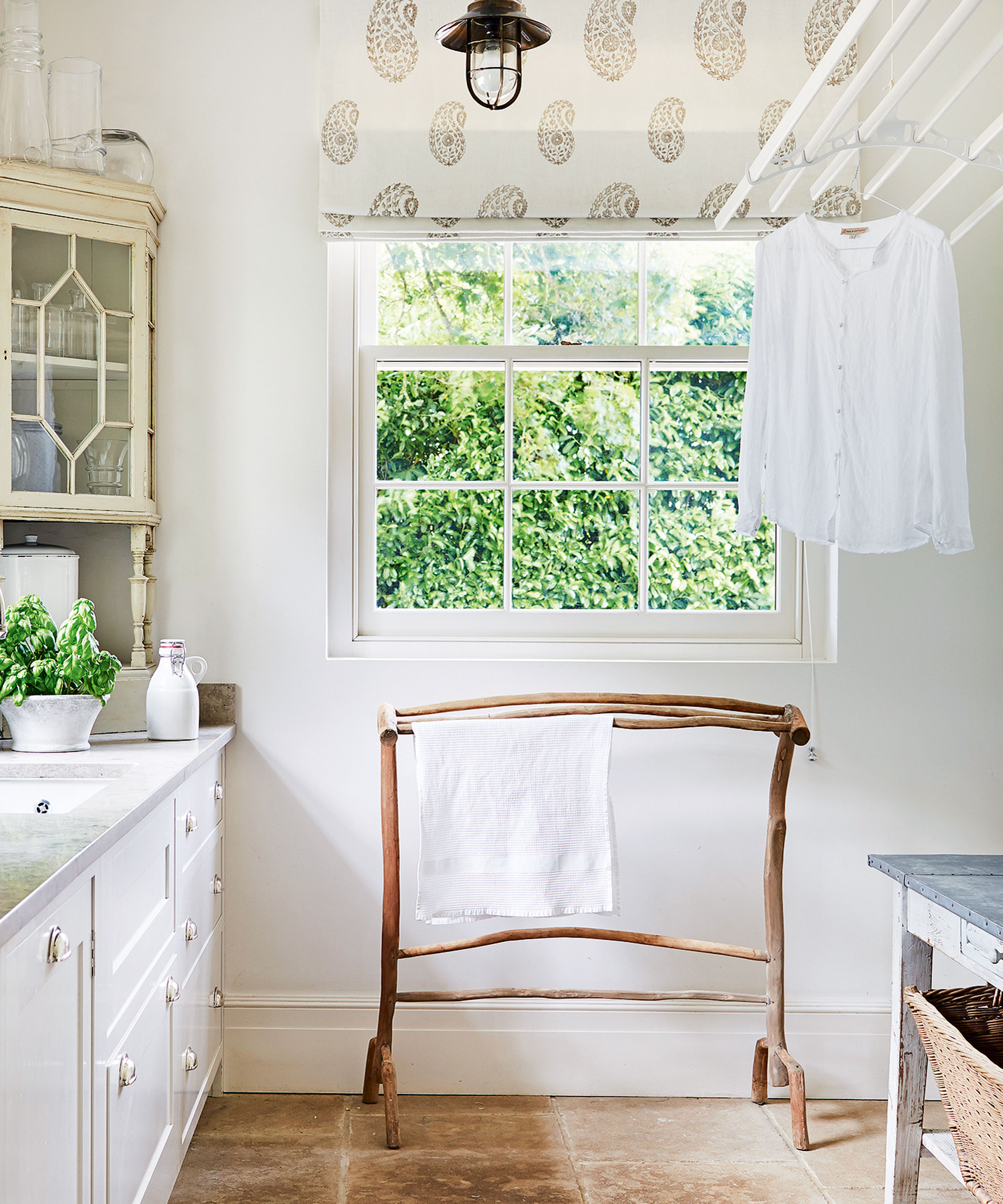
Regularly open windows near drying laundry to reduce humidity and allow fresh air to circulate.
Don't let this risk put you off, however. There are still several benefits to air drying laundry so long as you do it correctly.
Kelly Russum, owner of KC’s 23 ½ Hour Plumbing and Air Conditioning asserts that it is an effective way to save energy when doing laundry.
He advises, 'Drying clothes indoors is a bad idea only if you have high or near-high humidity in a room, and it’s not properly ventilated. But, if your home is well-ventilated and your humidity levels are in check, it’s completely okay to dry your clothes indoors – and even beneficial if the air humidity is lower than 40%,' and your house feels dry.
He stresses, 'You should still keep an eye on your humidity by using a hygrometer in that room that you use for drying clothes, ventilate the room occasionally by opening the window or running a fan, and using moisture-absorbing bags with silica gel, such as LotFancy Silica Gel Packets available at Amazon, to absorb excess moisture and make the clothes dry faster.'
You can also invest in one of the best dehumidifiers to zap away excess moisture and prevent mold, or try an eco-friendly DIY dehumidifier to reduce humidity without driving up energy bills. Homes & Gardens' Solved content editor, Chiana Dickson, swears by her dehumidifier to dry clothes quickly indoors, explaining, 'I position my dehumidifier so that it sits beneath my gullwing clothes drying rack [availible at Walmart]. This way, it sucks away moisture at the source, and blows dry air over the damp laundry, drying it perfectly, without any musty smells, overnight. I wouldn't be without it!'
All prices correct at time of publication.
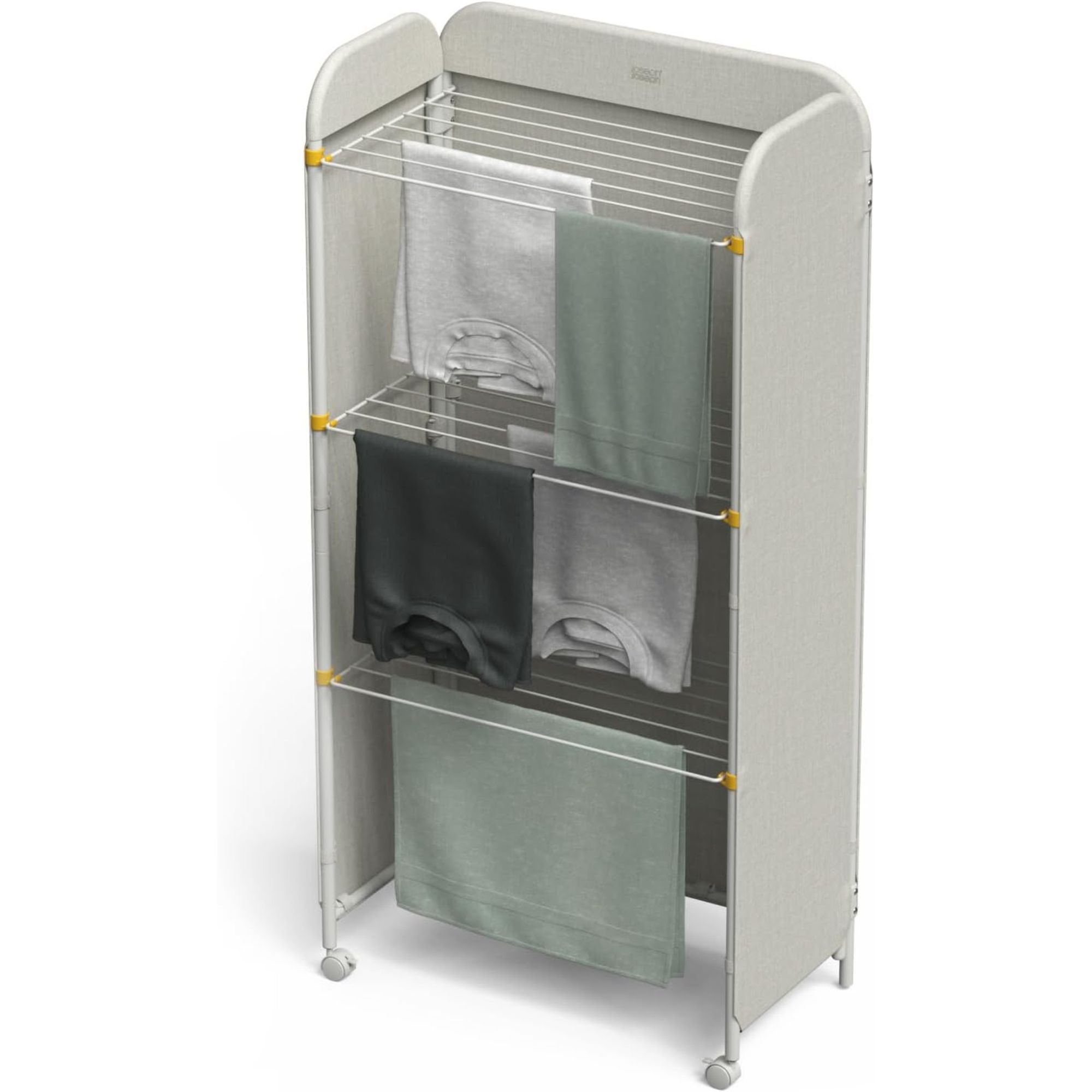
This might cost a little more than your average clothes rack, but this Joseph Joseph Eclipse indoor clothes airer is perfect for tiny spaces, folding flat for storage and featuring a clever ecru screen to hide drying laundry from view. It even looks good enough to leave up when guests come over.
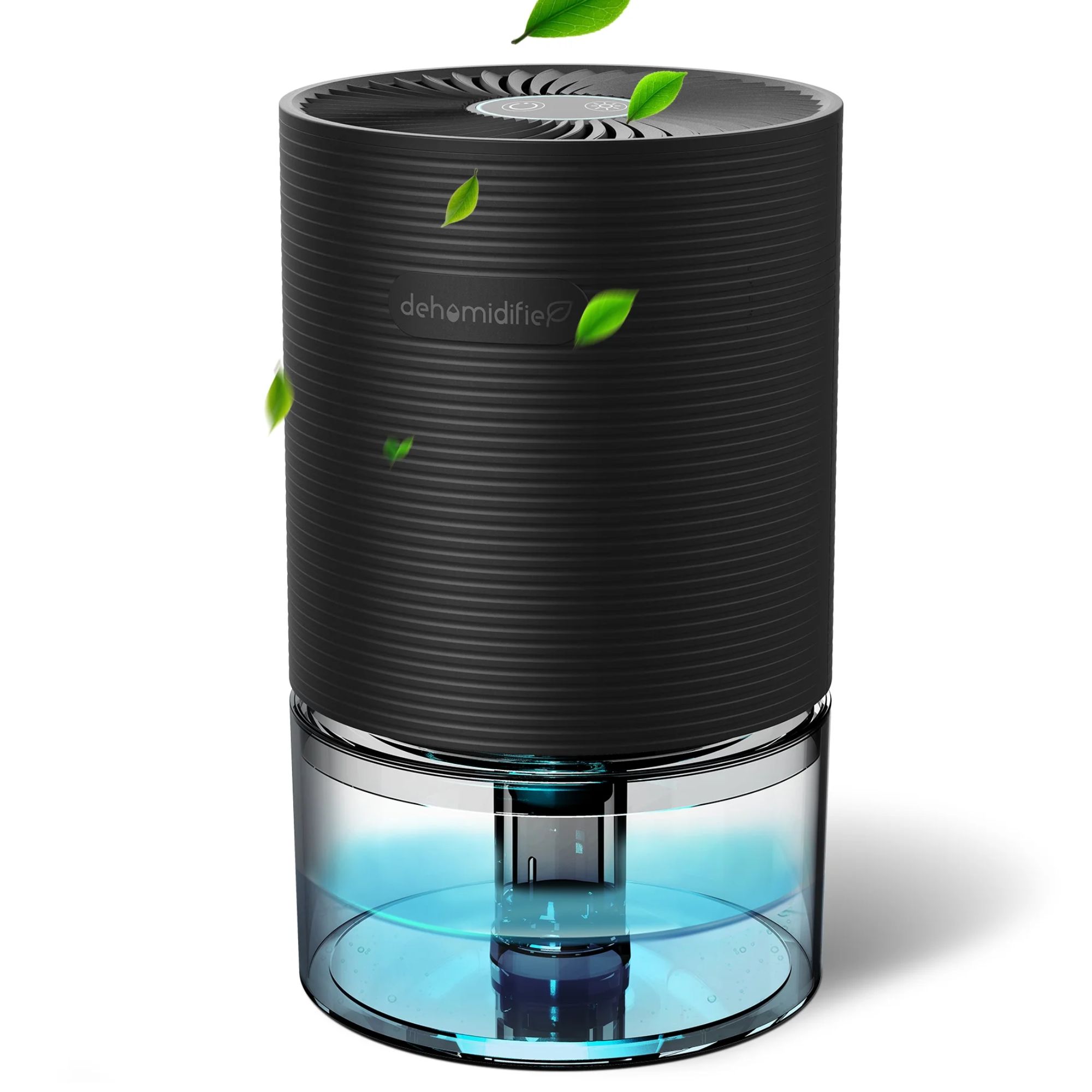
This small and compact dehumidifier is lightweight and portable, with an ultra-quiet, auto shut-off function, and seven colorful LED lights.
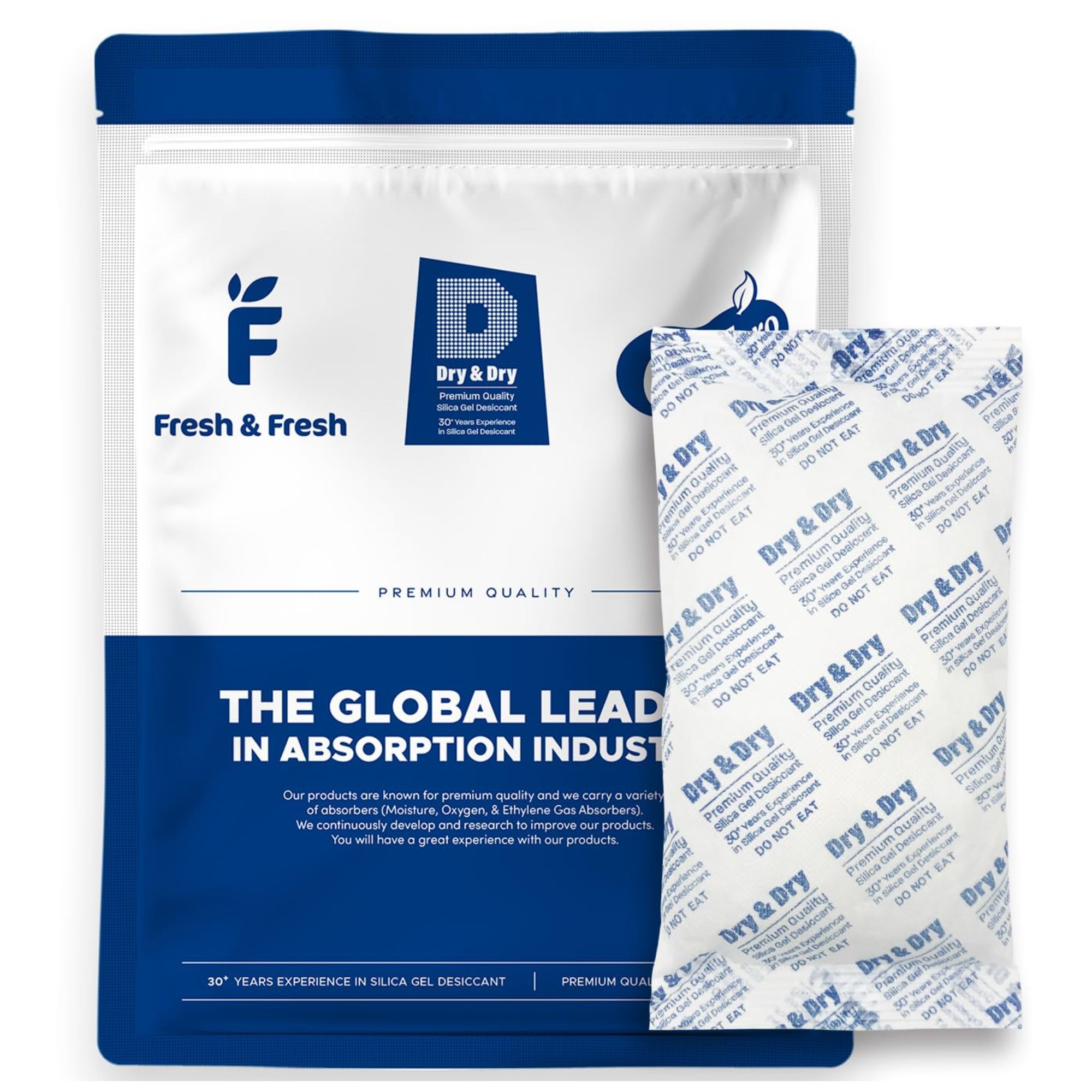
These small yet mighty silica gel packets protect your items from the growth of mold and mildew, and can be reused again and again.
Meet our experts

Seth Mapp has over a decade of experience in the residential HVAC industry, working his way up from technician to owner, now leading the region's top provider.

Kelly Russum has more than 46 years of hands-on experience, with features in U.S. News, Apartment Therapy, Family Handyman and more.
Another important step to protect your laundry room from mold is removing mold from the rubber seal on your washing machine. Neglecting this pesky task can lead to dirty clothes and musty odors, not to mention reducing how long a washing machine lasts.

Ottilie joined Homes & Gardens last year, after finishing a Master's in Magazine Journalism at City, University of London. With previous contributions in Livingetc and Motorsport Magazine, she produces content for the Solved section on the website, focusing on clever tips and tricks to keep your home beautiful, organized, and clean, with particular expertise on all things home fragrance. She also has a Master's degree in English Literature and History of Art from the University of Edinburgh, where she developed a love for inspiring interiors and architecture.